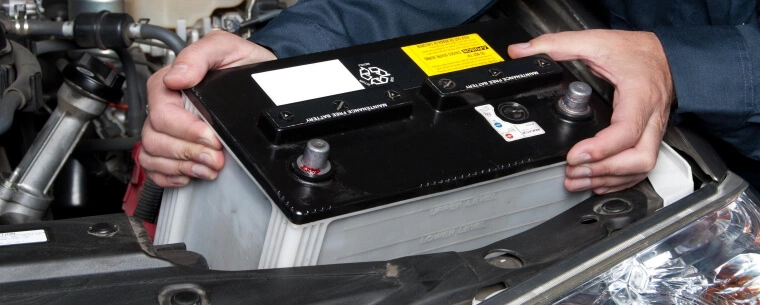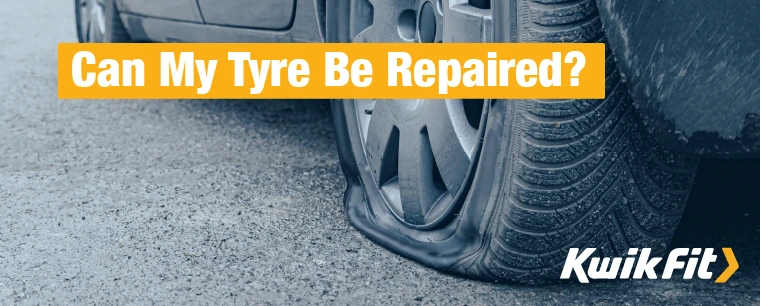How to Change a Car Battery
Bradley Jando | Wednesday 5th February 2020 12:03pm

As with any device, batteries have a lifespan and will eventually stop working. Unfortunately, they don’t often last as long as our cars and may need changing when they become defective. They can run out of charge, particularly if you use your vehicle infrequently or only for short journeys, or may just become too old to be able to start your car.
If your vehicle won’t start or you can hear a clicking noise when you turn the ignition, then it’s likely that you will need a new battery. You can change it yourself or, if you’re unsure about undertaking this task, Kwik Fit can change your battery for you. Use our Locate a Centre tool to find your nearest repair centre.
Did you know? The Kwik Fit battery test is free, takes less than 10 minutes and could alert you to any battery faults that you may not have noticed yet.
How to replace a car battery
Below, you can find all the information you need around how to remove a car battery and reconnect a new one.
How to remove a car battery
Most batteries are held in place using nuts that slot into the battery retaining bracket. These nuts will need to be removed using a wrench so that you can access the battery. Once each nut is removed, put it in a safe place that’s out of the way - you don’t want to lose one in the engine as you’ll need them again to secure the new battery. You may consider using a small container to keep the nuts in one place.
Before you take the battery out, use a torch to visually inspect it. Battery acid is highly corrosive and any cracks in the casing could indicate that there has been a leak at some point. If this is the case, it would be advisable to have battery specialists examine and replace the battery for you. The acid may have caused further damage to your engine or the bay that the device sits in and so these surrounding areas will need to be checked too.
When you’ve determined that the battery is safe to remove and isn’t leaking, you can locate the battery terminals. One will have a red lead that has a plus symbol next to it and the other a black lead with a minus symbol. Always disconnect the black negative lead first. This can be done using a spanner. Never rest your spanner on the battery as this can connect the positive and negative terminals together, creating a current that could give you an electric shock.
Gently unscrew the nut on the black lead’s clamp until the clamp can be removed from the terminal. Use insulating tape or duct tape to wrap the clamp on the end of the lead. Repeat this process for the red lead at the positive terminal.
Keep both the red and black leads completely separate. You’ve made them as safe as possible by wrapping them in tape, however, every precaution should be taken.
The battery can now be lifted out of the engine.
How to reconnect a car battery
Once the old battery has been taken out, the new one needs to be connected. Position the battery inside the bay and remove the plastic caps that are on top of the terminals.
The positive terminal must be connected first. Push the positive red lead into the battery terminal that’s marked with a plus symbol. Then secure the nut into position and tighten it using your spanner. Repeat this process with the black, negative lead into the battery’s terminal marked with a minus symbol. The battery retaining bracket can now be replaced using the nuts that you kept safe earlier.
The old battery must be disposed of in a responsible manner - it cannot be put in with your household waste. Garages, scrap metal collectors and recycling centres, such as your local tip, will accept your old car battery. If you were to have a battery changed by a specialist, they could dispose of it for you.
How to test a car battery
Once your brand new battery is fitted, you will want to make sure that it works. The easiest way to do this is with a car battery tester. If you don’t already have one, you could purchase one that simply flashes green if the battery is charged, or you could invest in one that tells you the exact voltage. No matter what type you go for, you’ll be able to determine if your new battery has enough charge to start up your car.

The tester should come with instructions that tell you how to get an accurate reading. In most cases, the red lead of the tester will need to be attached to the battery’s positive terminal and the black lead to the negative terminal. Use the device to get a reading. The figure on the device should show as more than 12.4v when the engine is off. If the reading shows the voltage as under this figure, the battery may need charging.
Alternatively, you could take it for a free battery check at your local Kwik Fit centre. The test uses modern equipment that can alert you of any faults before you’re aware of them. It includes a check of the voltage output and the charging rate of the battery, as well as an inspection for corrosion on the battery’s terminals. The condition of the battery is also examined and you will be provided with a print out of the results to keep. If the battery shows signs of damage or age but you’re worried about replacing it yourself, this can be done by a specialist technician to save you the hassle.
Any facts, figures and prices shown in our blog articles are correct at time of publication.
Featured Articles
Can My Tyre Be Repaired?
Wednesday 22nd November 2023
It can be hard to tell if your puncture can be repaired or not. Read our handy guide to understand if your tyre can be saved or if you need a replacement.
How Long Do Tyres Last & How To Identify Wear
Wednesday 18th October 2023
Driving on old or worn tyres can be dangerous so you need to maintain them properly. Read about how long tyres should last and how to know if your tyres are old.
Wet Weather Driving Tips – Staying Safe in the Rain
Thursday 27th October 2022
Driving in the rain isn’t only a pain but can be surprisingly hazardous – here are our top tips for staying safe in wet & icy weather this winter.







